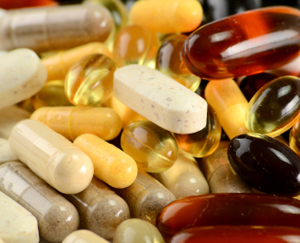What's the Best Form of Vitamin D?

It is now widely accepted that most of us don’t get enough sun, especially in the winter, to make the amount of vitamin D we need. Many experts agree that getting extra vitamin D is a good idea, either from supplements or from vitamin D–fortified foods. For those looking to supplement to correct or prevent deficiency, one study shows that of the two forms commonly sold, one of them will impact vitamin D status more efficiently.
Options for supplementing D
A common form of D used in supplements and food fortification is a synthetic variety called vitamin D2, or ergocalciferol.
Vitamin D3 (cholecalciferol) is made in the body when skin is exposed to sunlight and occurs naturally in foods like eggs and fish. In order to produce vitamin D3 for supplements, some manufacturers are extracting D3 from wool fat that has been exposed to ultraviolet light.
Making the comparison
The study, published in the Journal of Clinical Endocrinology and Metabolism, compared the effects of vitamin D2 and D3 supplements on vitamin D levels in healthy adults. The participants took capsules providing 50,000 IU of either vitamin D2 or D3 once per week for 12 weeks. Blood samples were drawn every two weeks to measure changes in blood vitamin D levels, and fat biopsies were taken at the beginning and end of the trial to measure changes in tissue vitamin D levels. In addition, a final blood sample was taken six weeks after the last dose.
D3 does the trick faster
Blood vitamin D levels rose throughout the trial in both groups, but rose more rapidly in the D3 group. By week 12, the average vitamin D level had risen nearly 50% more in the D3 group than in the D2 group. The increase in tissue vitamin D levels from the beginning to the end of the trial was roughly three times as great in the D3 group. Blood levels dropped at a similar rate in both groups after stopping the supplements, but because the D3 group had higher levels by week 12, they maintained an advantage over the D2 group at the 6-week follow up.
“These results show clearly that D3 produces a substantially larger effect than D2, as measured both by serum vitamin D status and by fat storage of the vitamin,” said lead study author Dr. Robert Heaney at Creighton University in Omaha, NE. “We determined that D3 was between 56 and 87% more potent than D2 at raising serum 25-hydroxy vitamin D levels, and more than three times as potent at increasing the amount of vitamin D stored in fat.”
Getting the right D
You can take the following steps to help ensure that your vitamin D status is healthy:
- Get vitamin D3 from rich natural food sources such as fatty fish and fish oil. Fortified foods are also fine (remember that vitamin D2 raises vitamin D levels in the body, just not as quickly).
- Spend a little time in the sun. Just 15 minutes without sunscreen a few times per week will help keep your D3 production strong.
- If you are concerned about your vitamin D status, ask your doctor whether it makes sense to test your levels.
- Look for nutritional supplements that contain cholecalciferol or vitamin D3 or be sure to conscientiously use your D2 supplements to ensure maximum benefit.
(J Clin Endocrinol Metab 2011;96:1911–30)
Copyright © 2025 TraceGains, Inc. All rights reserved.
